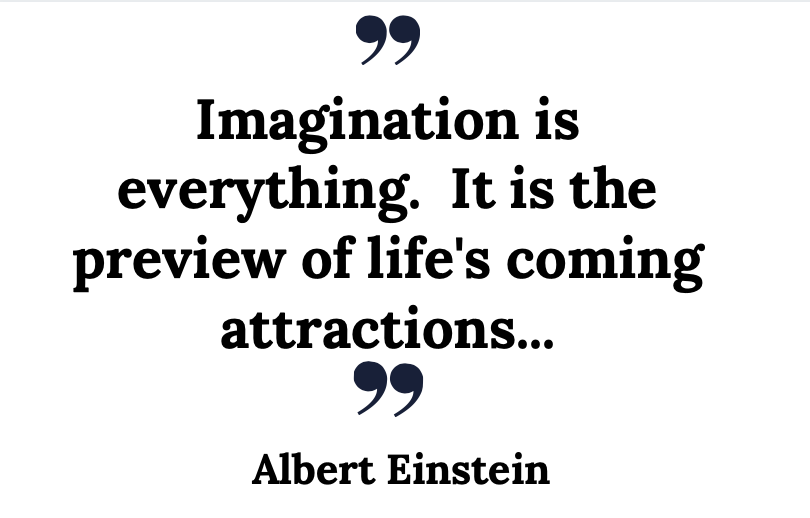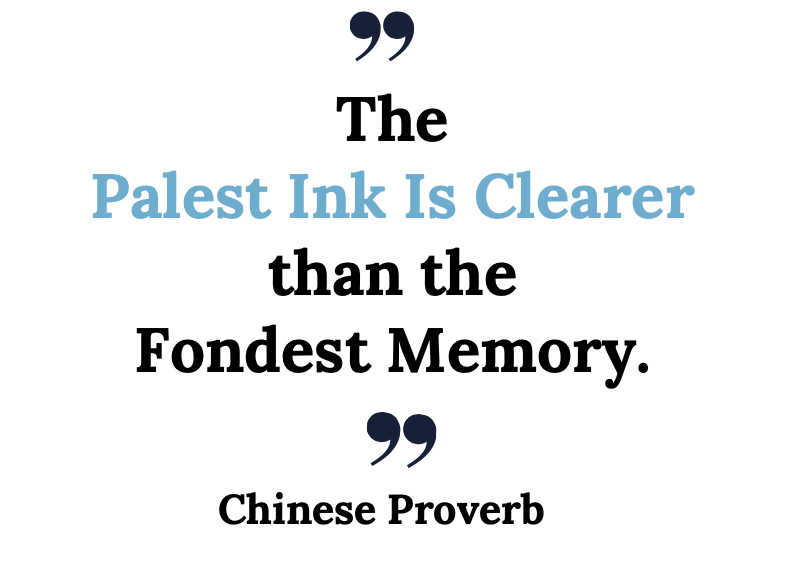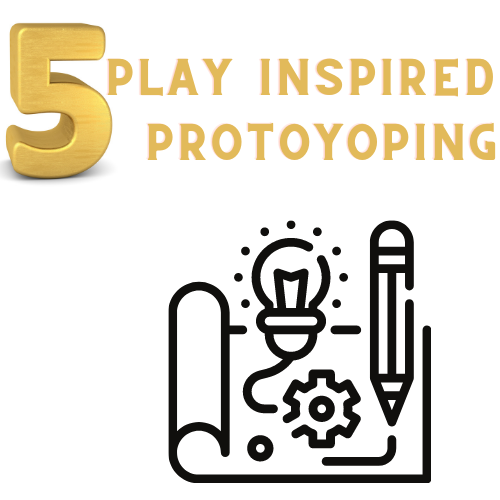Idea Generation Techniques
7 ways to get the ideas flowing at your next brainstorm session.
Good Ideas are Gold
Coming up with ideas can be hard. Tools and Techniques to spark innovation can help unlock any team's creativity. Get inspired for your next brainstorming with a summary of:
Approaches
Techniques, and
Key points to consider
In part, innovation is hard because years of education and work have 'trained it out of us.' Many are taught to deal in facts and not to let "our imaginations run away with us." But that is exactly what we are asking people to do for idea generation. So, take some time and experimentation to get the right key to unlock your team's creative potential.
Make sure your team is open to failure - the best ideas are happy accidents. So-called failure is often the proving ground for the really great ideas.
Prepare to Create!
But making the right environment for Ideation takes some planning. What are some of the keys to consider when preparing to brainstorm?
Innovation Needs Space
Start with a great space to think. The more open, airy, and relaxed, the better. Make it fun - so have:
refreshments available for participants
a mix of standing and sitting options
craft-style materials for building (such as blocks and paper)
flip charts and whiteboards with lots of colored pens
“What makes innovative thinking happen?... I think it’s really a mindset. You have to decide.”
Prime the Pump
Get the participants into the vibe of innovation by sharing a story or playing a TED talk on creativity. If you know of a group doing innovative things, have them come and demonstrate their journey, pitfalls, and outcomes. Get them to start the process for your team with the tools they used.
The art of innovation | Guy Kawasaki
How great leaders inspire action | Simon Sinek
State the Case
The group needs to agree on the target or targets for innovation. If the scope is broad, break it into sub-topics and allow the teams to choose which they will work on. Presenting too focused or too broad topics can create ideation 'brick walls' for participants.
Document as you go
Nothing is worse than a great idea that is forgotten. Capture the process and content. Random notes won't be enough to bring the idea to life later. Make sure the idea is understood and following the ideation session. So make sure you capture the substance with:
define the scribe role to document the work as they go
notes and flip charts
photos and video of the process and content
storyboard to put the idea into context
note the key point, assumptions, and issues to investigate and resolve later
Innovation ends with clarity
The innovation process is and should be somewhat fuzzy to let the ideas flow. However, the ending of every session needs to include:
idea capture
vetting and selection
action and next steps
Brainstorming sessions don't have to use only one approach. Each person has a unique way of looking at things and approaching problems. So use various approaches (different methods can be used in parallel or consecutively in one session to get the best from everyone).
You never know how and when lightning will strike.
Pssst! - I cover the information below and give you 2 extra ideas in my video! Take a look.
7 Idea Generation Techniques
Idea Method 2x
Innovation can come from a variety of methods. Use the one that best fits your goal and situation. But think about paring the first choice with a less likely option just to shake things up a bit. Chaos is a creative process - so use it to your advantage.
Situational
Situational techniques require we understand the environment, roles and people involved. They help us think through the experience of the user and ideate new ways of working, processes or products. Make it real or completely aspirational. Ask your team to think beyond the current state to a future that works better for all.
Walk a Mile in Someone’s Shoes
Create a timeline and action playbook or cartoon with your persona or hero at the center of the action. Note what they do, but also why and how.
Key. Understand the person you are focused on, have the facts about the problem.
Pro. Provides a high level of success when focused on one job or person.
Con. Grounding a team into too many facts can constrain idea generation.
Inspirational Improvisation
Use different people to play various roles, use props and movement to get into the part. Use improvisation together with real examples. Don't script it, let it flow. Film the process to see if any sparks ignite.
The goal is to wonder out loud and ponder with curiosity.
Key. A facilitated improvisation approach to seeking an unknown outcome.
Pro. Natural way to build ideas off of various points of view and roles.
Con. This approach feels like acting, and some team members may struggle with ad-libbing without deep situational knowledge.
First Fantastic, then pragmatic
Create a free-flowing fantasy of the most extraordinary outcomes. Start the story with something true (the business situation) and then read the opening of one of these stories and riff from there. Don’t be pragmatic - dream big.
Key. The team needs to understand the mechanics of storytelling Click here for the free Storytelling Workbook
Pro. Story creation is key to selling the idea later, and this approach does both.
Con. The story needs to be tested for viability and applicability to the situation later.
Rapid Fire
This “don't think - just create” approach can help by breaking down the natural barriers and the desire to self-edit that we all face when trying to come up with an idea. Don’t go for just one idea. Go for lots of ideas and pare-down afterwards. Start with an fun ice breaker to get people ready create and to add energy to the team.
Catch an Idea
Set the goal, summarize a keyword on a ballon and then toss the ballon back and forth between players. As each person catches it, they provide a one word “stream of conscientious” idea and immediately toss the ball to the next player. Ideas may build or be stand-alone.
Get started with a statement such as: "Life will be better when Sally has a ....."
Key. Strong facilitators needed to focus on the correct setup statement or question and close the process before the team's loses energy.
Pro. Can loosen up the team and unlock some ideas to explore with other methods. Can use as an ice breaker.
Con. It may take some time to get in the groove.
Build it, then they will come
Do you know the Marshmellow game? Teams build the highest tower using only spaghetti and marshmallows. Kids always win this, because they don’t design, they just start building.
Put materials on a table and let small teams work together to create an object and explain how to use it. The object is not the main point. The idea and use case is. Timebox the team to allow for pace and at least 2 rounds to keep idea moving. Then assess what you have.
Follow up by using the a Situational method to test the process, product, or service.
Key. Can work well for a team with an understanding of the product and problem.
Pro. A team with critical thinking skills and time to work can create several ideas in one session.
Con. Teams need to keep moving and not get stuck in details.
Systematic
These methods may seem easier, but in fact, they require more planning and foresight. The upside is that they can lead to big ideas, especially for technical and scientific groups or groups working virtually. The downside is that the structured processes may be treated as a “crutch” by participants, falling back on tried and true instead of innovation. So try to use another method in combination if possible.
Cross Collaboration
Using collaboration software and moderated topics to idea with multiple people diverse in geography, skills, or interests. The key goal here is to capture all ideas. Moderators keep the conversation flowing and look for sparks created between 2 or more ideas and users.
When something interesting happens, the Moderators or participants move a small team into virtual breakout rooms to work and ideas. Then send it back to the plenary session or for additional moderation with a team set up to vet the idea for technical and scientific value.
Key. Use an external team to run the technology and process. Focus on internal moderators to help with discussions and idea incubation.
Pro. Multiple idea topics are self-selected by participants so that high energy can spark collaborative joy.
Con. Time zones can be challenging. Moderators need to be insightful and diplomatic to keep the conversations going.
Spring-boarding your Success
Ideas sometimes come from looking at an unrelated industry or problem. Read the famous HBR or other case studies. Review how the problem often became the source of the solution. Then put your product or problem into the same context and work it as your own case study.
Key. Pre-read the cases to allow the focus to be on a facilitated walkthrough and discussion. Use physical representations of the product or problem.
Pro. Can energize a team with a heroic story from another context and time.
Con. Can create a myopic focus on unimportant case details and lose the innovation vibe.
Following the ideation, vet the ideas. Use mind mapping to collect and cluster them into solution sets. Test the best solutions for feasibility, viability, and sustanablity. Get more details on running your ideation session and a free downloadable guide here.
So what do you think? Do you use a different approach? Would you mind sharing your best brainstorming story in the comments below?














